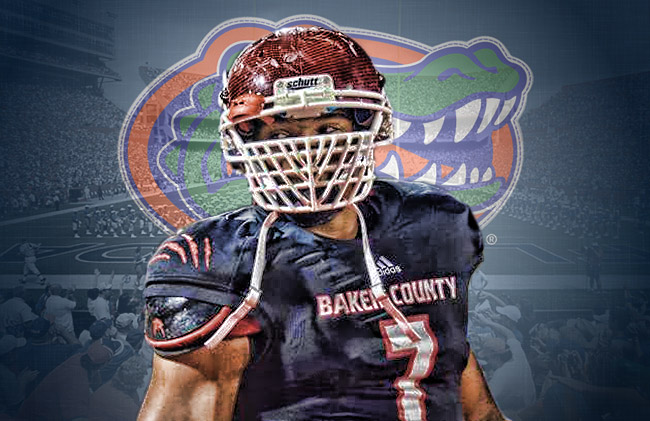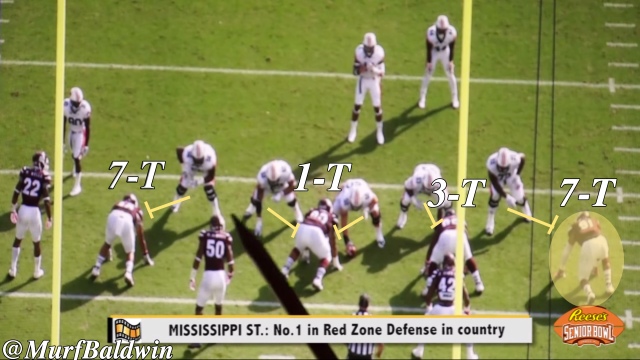Film Study: Gators' CeCe Jefferson is an unreal talent
I’m guilty of it, and I can comfortably speak for the rest of the media, too.
As it pertains to analyzing personnel and scheme for this great sport we call college football, we tend to be an instant gratification-like society.
When it comes to determining order of rank, at least coming out of spring practices, we tend to only evaluate the personnel we see in spring games and mesh that with which team we feel finished the hottest.
While that line of thinking certainly has its place in the evaluation business, it’s not always the most accurate way of going about it. In February, we get so amped up for National Signing Day that we often crown certain teams based off its haul of high school prospects.
Additionally, we get so excited for spring practices to arrive that any little tidbit of information, be it positive or negative, can sway an opinion quicker than you’d imagine.
But think about it; where would the University of Georgia have been if not for the performance of true freshman running back Nick Chubb? How about the University of Tennessee’s explosive pass-rush set without first-year stud Derek Barnett?
You know what both of those superstars have in common? Neither participated in their team’s respective spring game.
For the University of Florida, the loss of all-world edge-player Dante Fowler Jr. is undoubtedly a significant one for a team with, elsewise, all the trimmings to be considered in the running for the Southeastern Conference’s title of best defense: a suffocating defensive backfield led by potential first-round pick corner Vernon Hargreaves III and impact players on the second level and in the trenches.
But moreover, it has a potential impact true freshman who could step right into Fowler’s spot and dominate.
That’s right, the Gators are about to unleash a future superstar out on the edges in Baker County Senior High School freak CeCe Jefferson…but what’s new?
Schematic Versatility
One of the most under-the-radar hires in the conference had to be Florida’s acquisition of former Mississippi State University defensive coordinator Geoff Collins who will serve as the successor to one of the, if not the, brightest minds in the entire sport, former head coach Will Muschamp.
With new head coach Jim McElwain focused on implementing his multi-pronged approach on offense, which includes transforming a certain quarterback into a star, this provides Collins a chance to not only move up the ladder in programs, but he also gets to do so with virtual carte blanche.
While MSU’s offense received the majority of the credit for a season in which it rose to prominence as the No. 1-ranked team in the nation, and rightfully so, State’s defensive unit certainly played its part behind an endless supply of quality players in the front seven.
Collins runs an even-front defense that’s traditional in deployment which allows for players to execute with sound gap awareness against the run, but it also allows for isolation out on the edges in the form of a 6-, 7- or even 9-technique DE.
The reason being is that Collins often deploys a de facto nose tackle to occupy blocks on the interior with another interior player, usually a one-gap penetrating 3-technique, getting upfield to cause havoc.
Here’s an example of State’s interior homewrecker, Chris Jones, getting pressure in the face of the QB and forcing a quick throw.
Here’s a better look at how odd-front principles can be infused into an even-front unit allowing for more space for the edge-players.
The 6’5″, 271-pound Preston Smith racked up nine sacks from the featured spot in Collins’ defense last season for State. Smith also racked up 48 tackles with 15 of them going for a loss — showing how complete one must be to be an edge presence on a Collins defense.
The coach also does a fantastic job in the fabricated-pressure portion of his playbook as he’s apt to bring extra men on any given play. His “psycho” defense often confused QBs as it presented a totally different look transitioning from pre to post snap.
Having an edge-player who can rush from all over the formation would take his defense to the next level.
Enter Jefferson.
At 6’2″, 250 pounds, Jefferson is not built like your traditional 7-technique end. Don’t get me wrong; he already has the physique of an NFL vet.
However, traditionally, it’s the 6’5″ 270-plus end we normally see in a four-man front, but there’s no denying Jefferson is strong enough to thrive at the position. But his extreme athleticism has to keep Collins up at night thinking of ways to deploy him.
Here we see Jefferson operating out in space as an outside linebacker against “00 personnel.” He showed fantastic instincts and discipline which helped him read the QB’s eyes for that pick-six. How many DEs do you know with the prerequisite athleticism to not only operate out in space, but to also produce a highlight-reel turnover by leaping fifty feet in the air (not really, but you get the point)?
This is why it’s in Collins’ best interest to play Jefferson, periodically, at a 9-technique where he could use his suddenness out in space against tackles. The incoming freshman has a skill set very reminiscent of his predecessor Fowler Jr., who had the ability to play in an odd- or even-front scheme as he can work from a two-point stance. (Check out the aggressiveness of Jefferson in the above sequence.)
Here we see Jefferson taking advantage of a conflict of assignment and completely blowing up a block by a running back on his way to a sack. Don’t expect Jefferson to immediately be as good as Fowler — who was the third-overall pick in the NFL draft — but eventually he will.
Collins has a nice chess piece for his arsenal who is a scheme-specific fit for a defensive scheme centered around versatile players; sure didn’t take long for the Gators to reload after the loss of Fowler Jr., huh?
Expect big things from one Mr. Jefferson.






